February 8, 2022
Have you ever wondered why you might be drawn to a piping hot cup of invigorating, brain-boosting coffee in the morning? Or why, after a long day, a glass of organic, biodynamic red wine can do wonders for relaxing your mind and lifting your spirits? And have you thought about how interesting it is that, perhaps since the dawn of time, humans have been so drawn to psychoactive or mind-altering plant compounds that can shift one's state of consciousness?
I, for one, believe that these desires are linked to an inherent, natural craving that us human beings possess to achieve some kind of altered – and preferably elevated – state of consciousness on a continual basis, whether that be via breathing, sex, food, drink, supplements, experiences and the like. In fact, you may be surprised–or maybe not, if you’ve been a reader for a while—to hear me say that, even as a devoted Christian and family man, I don’t think there’s anything wrong with “elevating your mental state” or shifting your state of consciousness via activities like exercise, sex, nature immersion, food, drink, or even mind-altering substances such as nootropics and psychedelics. God made us to be fascinating beings with the ability to be able to flood our cell receptors with specific neurotransmitters and chemical signals that can shift us up or shift us down for purposes such as relaxation, meditation, productivity, creativity and the like.
In other words, I believe it’s completely natural to use elements borrowed from God’s creation to help shift your mind into a state in which you can be more impactful, more productive, more energetic, more loving, or simply more appreciative of everything you’re experiencing in a given moment.
With that being said, combined with the fact that as a bit of an “immersive journalist” who tries out a dizzying variety of body, mind, and spirit optimization strategies and reports back to the world about what works and what doesn't, I’ve been on a personal quest over the last several years to not only maximize my daily productivity and creativity, but also to deepen my connection with God, my family, and nature.
Among other tactics, this quest has involved experimentation with a number of substances, including smart drugs like Modafinil and racetams, a wide variety of both natural and synthetic nootropics, and psychedelic compounds such as LSD, LSA, ketamine, mescaline, iboga, DMT, and many others. These substances have—especially when combined with breathwork, fasting, meditation, prayer, nature immersion, and other spiritual disciplines—allowed me to achieve a level of personal growth that I can quite confidently say would not have been possible in the same timeframe without them (and I should clarify that I am NOT saying everyone needs to go to Peru to do ayahuasca, but I AM saying that humankind has always used certain substances, even in very small amounts, to shift their mental and physical state, and you'd likely benefit from a few of them).
Admittedly, I’ve published quite a hefty bunch of articles and podcasts discussing my experiences with nootropics, smart drugs, psychedelics, and other plant medicine…
Articles:
- Limitless & Lucy – Your Ultimate, Done-For-You Guide To Nootropics, Smart Drugs & Psychedelics.
- Microdosing With Psychedelics & Beyond: The Psychedelic Renaissance (Why Psychedelic Research Is Picking Up Where It Left Off Decades Ago & The Surprising Results).
- Mushrooms 101: Everything You Need To Know About The Psilocybin Psychedelics That Are Taking The Health World By Storm.
- The Ultimate Guide To Nootropics: How To Safely Use Better Living Through Science To Get The Most Firepower Out Of Your Brain – Part 1 & Part 2
- Breath Vs. Psychedelics: How Breathwork Journeys Can Release DMT For A Psychedelic-Like Experience, Clear Emotional Trauma, & Re-Energize Your Body.
Podcasts:
- Microdosing For Sports Performance, Microdosing Stacks With Psychedelics & Plant Medicines, The Best Microdosing Protocols & Much More With James Fadiman.
- Microdosing Psychedelics, How To Use LSD, Shrooms, Iboga & Other Plant Medicines, Legal Psilocybin Retreats, Truffles & Much More With Third Wave’s Paul Austin.
- Microdosing, Biohacking Plant Medicines, Psychedelic-Assisted Psychotherapy, & More – How “Field Trip Health” Works For Ketamine, MDMA, DMT, Psilocybin, & Beyond!
- Muscle Gain, Fat Loss, Stem Cells In the D*ck, Microdosing Plant Medicines, Splenda, Amino Acids, Content Creation, Adult Slurpees & More With Filmmaker & Content Creator Darren Doane.
- The Official CBD FAQ: Everything You’ve Always Wanted To Know About CBD, Combining Psychedelics With Cannabinoids, Smokeable Ayahuasca, Microdosing With Plant Medicine & Much More!
…however, it’s been a few years since I’ve discussed this topic in detail, and quite a bit has changed for me since then, so I figured it was about time to fill you in on “what crazy compounds Ben is using now to boost his brain,” including my exact protocols for sourcing, dosing, and frequency.
But first, my usual disclaimer…
If I could issue any warning, it would be this: many of these substances are very powerful. Some of them can cause a significant influx of neurotransmitters like serotonin and dopamine, and when not used responsibly, can lead to addiction, dehydration, tolerance, nervous system issues, and neurotransmitter imbalances. So please, measure carefully, stay mindful, proceed at your own risk, start low and slow, and take the precautions mentioned here so as not to get yourself in a situation of addiction or tolerance that could be very uncomfortable to break out of. In other words, as Steven Kotler and Jamie Wheal state in their excellent book “Stealing Fire,” use these compounds with more stoicism than hedonism.
The List of Nootropics, Psychedelics, and Other Plant Compounds I’m Currently “Microdosing” With to Elevate My Mental State
As a busy CEO, entrepreneur, podcaster, author, father, husband, and generally curious person, I’ve been interested in mind-enhancing substances that can help me “get that little mental edge” for many years.
After years of experimentation, however, I believe I’ve found a more simplified and streamlined protocol—at least for Ben Greenfield standards, heh—that allows me to reap the most benefits throughout my day while using fewer substances. I’ve also been relying more on “substance-free” enhancers, like meditation and breathwork, as well as new nootropic-like technology that I’ll discuss later in this article.
So, without further ado, here are the compounds I’m currently using throughout my day.
Nootropics & Plant Compounds
Caffeine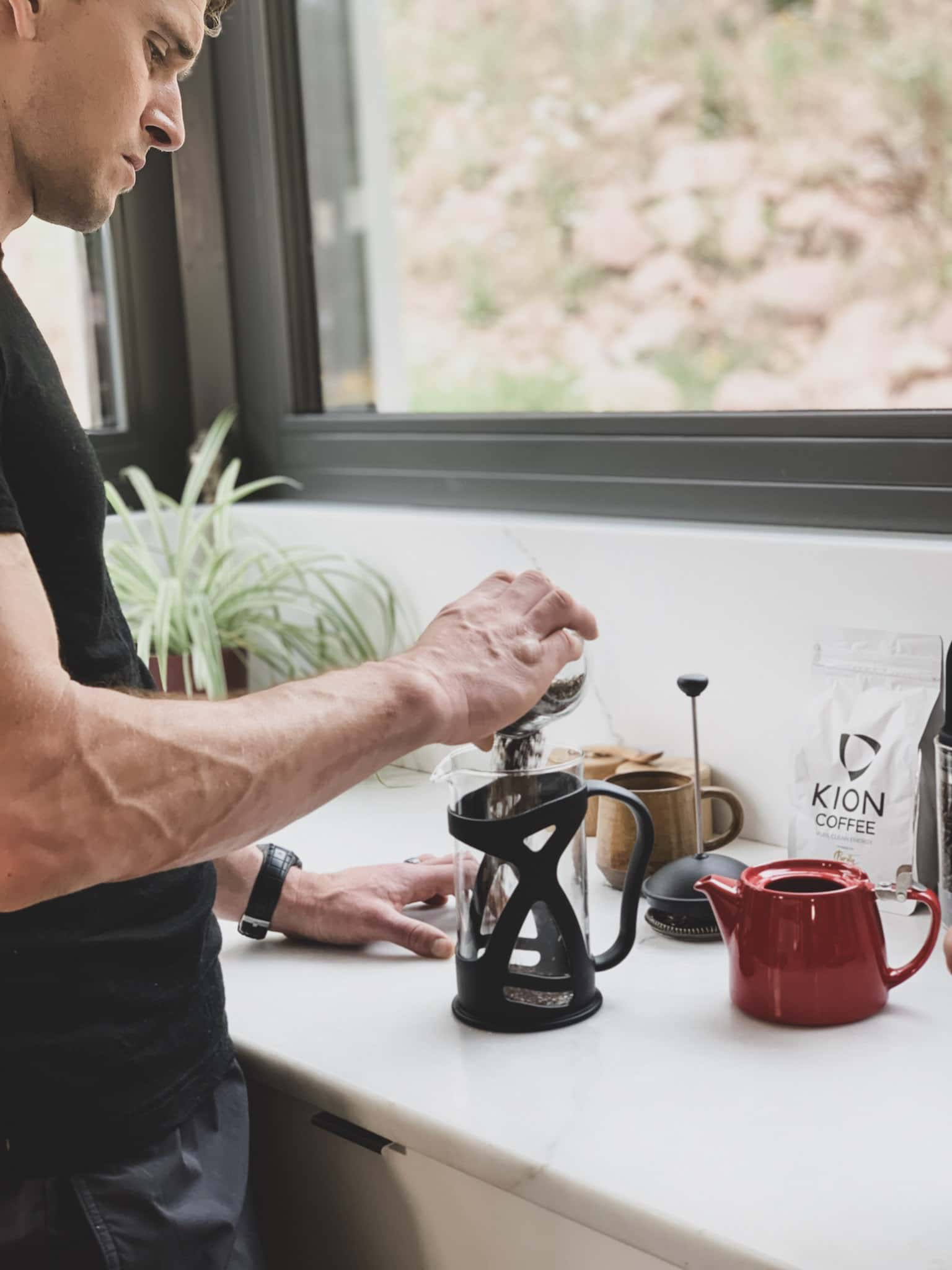
That’s right, I’m just another one of you mere mortals, and I love to start nearly every morning with the world’s most widely used natural drug: caffeine—specifically in the form of a piping hot cup of black coffee, usually with nothing added. I drink a cup of coffee four to five mornings a week, although I switch to decaf for one week every 30-40 days so I don't build a hefty tolerance to caffeine (this is the regular coffee I use and this is the decaf coffee I use).
Coffee’s brain-boosting effects are probably no surprise to anyone that’s used it as a tool to pull a caffeine-fueled all-nighter, to avoid dozing off while driving through the Midwestern United States, or to keep working into the wee hours of the night to meet a deadline.
But you may be surprised to know that coffee’s nootropic properties aren’t just due to its caffeine content. Rather, the phytochemical content of coffee, which contains over a thousand different natural chemicals, gives it potent antioxidant and anti-inflammatory properties that seem to also part unique neuroprotective and cognition-enhancing benefits. If you want to learn more about the health benefits of caffeine and coffee, I’d recommend checking out “Get To Know Your Joe: The Latest, Groundbreaking (Pun Intended) News & Research On The Health Effects Of Coffee.”
So with that being said, I’d highly recommend getting your daily nootropic dose of caffeine from organic coffee or even tea—as opposed to a Red Bull, Monster, or some other Frankenstein-esque caffeinated beverage.
Coffee also stacks well with the adaptogenic mushrooms described below, and I'll occasionally also add a bit of Omica Organics stevia and a pinch of Colima salt to my coffee for a bonus culinary adventure.
Dosing:
Effective doses of caffeine range from 60-100mg (or one 8-ounce cup o’ joe) and most recommendations state to keep your consumption under 400mg per day. I personally rarely exceed two cups of coffee per day which keeps me well under the limit and prevents becoming heavily addicted or tolerant to caffeine.
Cautions:
“Slow caffeine oxidizers” may want to take it easy on the caffeine or avoid it altogether. These individuals carry copies of a gene called COMT (which can be confirmed with a genetic test) that affects the function of certain neurotransmitters and ultimately means that consistently overdoing it on caffeine can lead to serious jitters, sleep disruptions, and even higher risk of cardiovascular disease.
Caffeine is also very easy to build up a tolerance to, so again, in order to maintain its nootropic effects, I’d suggest occasionally cycling off of it, for example, by switching to decaf coffee for one week per month—as I detail in the article “How To Get All The Health Benefits Of Coffee Without The Caffeine (& My Go-To Source For Decaf Coffee)”
MiCacao Tea
 On mornings when I don’t drink coffee, I’ll usually turn to a delicious concoction called MiCacao Tea, which is basically akin to drinking a chocolate bar. It’s a loose-leaf chocolate tea that is completely natural and preservative-free, and the ingredients are about as simple as you can get: cacao nibs and cacao shells.
On mornings when I don’t drink coffee, I’ll usually turn to a delicious concoction called MiCacao Tea, which is basically akin to drinking a chocolate bar. It’s a loose-leaf chocolate tea that is completely natural and preservative-free, and the ingredients are about as simple as you can get: cacao nibs and cacao shells.
Why on earth would I drink chocolate in the morning, you might ask?
Well, as I laid out in fascinating detail in my recent article on the history and benefits of chocolate, it’s essentially more akin to medicine than food. Chocolate’s antioxidants, minerals, and fatty acids are responsible for a host of whole-body health benefits, but it’s also choc-full (heh) of mind-altering psychoactive substances that can help you reach a state of alertness and focus:
- Endocannabinoids, like anandamide, often referred to as the “bliss molecule”
- Terpenes, including myrcene, linalool, and ocimene, which have calming and mood-boosting effects
- Xanthines like theobromine and caffeine, mild stimulants that can improve blood flow and cognitive function
- Tryptophan, an essential amino acid that can boost serotonin levels
In other words, MiCacao gives me more of a calm, pleasant, creative boost versus the jolt of energy and “get s#!t done” boost from coffee.
Dosing:
There isn’t currently a “clinically-proven effective dose” of chocolate for nootropic effects, but I find that one cup of MiCacao tea—which contains 1 tsp of pure cacao–is enough to do the trick most mornings. This stuff, like coffee, tends to stack quite well with one to three packets of the adaptogenic mushrooms described below, and I often do that (e.g. a cup of black coffee or tea with a packet of, say, cordyceps and lion's mane thrown in).
Adaptogenic Mushrooms
No, not the magic kind. Don’t worry, we’ll get to those in just a minute… The mushrooms I’m referring to here specifically are adaptogenic mushrooms, which don’t necessarily make you hallucinate, but work by “increasing body resistance to physically, chemically or biologically noxious factors, thereby having a normalizing effect on body functions and inflicting no harm.”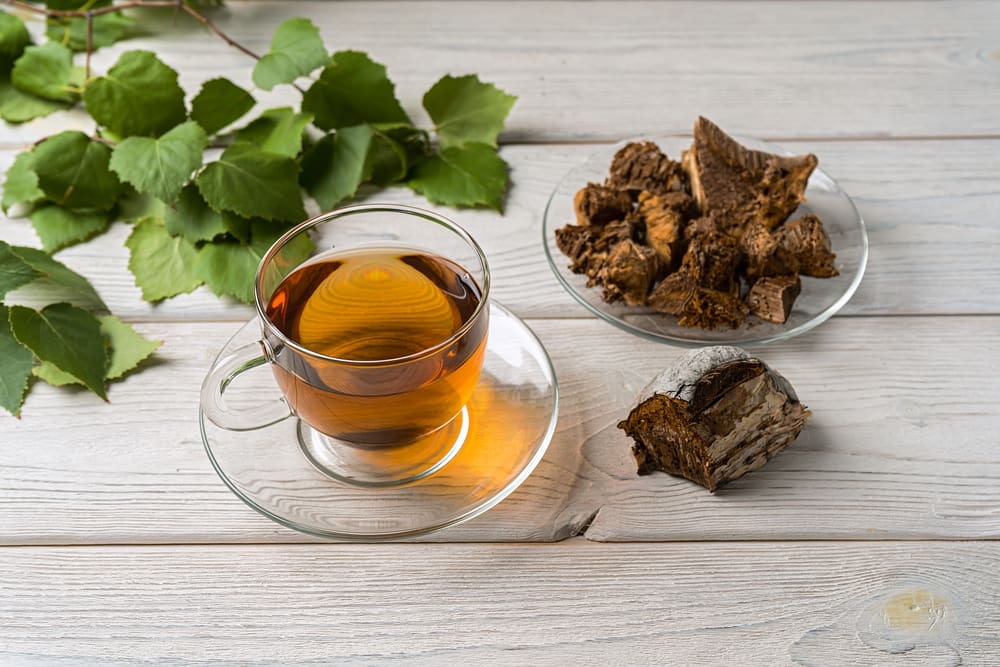
In other words, rather than serving a single targeted purpose, an adaptogenic substance will, hence the name, “adapt” to whatever your body specifically needs at a given time. While that sounds like a bunch of woo-woo gobbeldy-gook, adaptogens are quite well recognized in the scientific literature at this point in time.
While there are a plethora of different mushrooms to choose from for whatever ails you, when it comes to enhancing cognition, mood, and mental state, I’m a fan of a few in particular:
- Lion’s mane, which has been shown to reduce inflammation-related depression, lower anxiety, and increase recognition memory.
- Cordyceps, which can help improve learning and memory, boost mental and physical energy, and provide neuroprotective effects for the brain.
- Reishi, for its calming antidepressant and anti-anxiety effects.
You can certainly purchase these mushrooms separately and make your own brain-boosting concoctions, but for ease, I simply throw in a few packets of the Four Sigmatic Mushroom Elixir Mix with Chaga, Reishi, Lion’s Mane, or Cordyceps, or the 10 Mushroom Blend for the shroomy immunity shotgun approach, to my coffee or tea for an extra mental punch in the morning. Easy peasy.
Dosing:
Doses of Lion’s Mane can range from 500mg-3000mg, and 1000mg-3000mg for Cordyceps.
Feel Free (Kratom + Kava)
As I’ve mentioned many, many times as of late, Feel Free is one of my all-time favorite botanical blends. Their Wellness Tonic is made with a combination of kava and kratom, which essentially work in combination to deliver a shot of euphoric energy to your brain.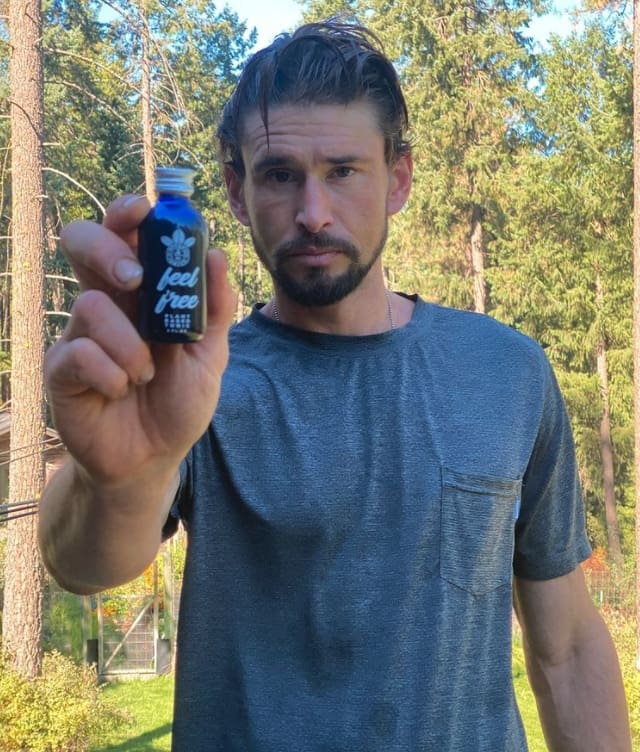
Kava has been used by South Pacific islanders for thousands of years for its medicinal effects and as a remedy for anxiety, nervousness, and insomnia. The Islanders classify kava as a gentle entheogen (psychedelic) that can enhance creativity and introspection, increase productivity, and boost relaxation all at the same time. Its active compounds (known as kavalactones) modulate key receptors in the brain that enhance the activity of the body’s main pleasure chemicals: dopamine, serotonin, and GABA. This creates kava’s signature mood-boosting and stress-relieving effects.
Kratom is a tropical plant indigenous to Southeast Asia, where it’s been used for hundreds of years for its distinct psychotropic properties. Recent evidence shows that kratom acts as a calm stimulant, and provides physiological effects similar to opioids, including pain relief and euphoria. Sourcing is important for kratom, which I discuss in my podcast about Feel Free, which you can listen to here to learn more.
Because of its stimulating, yet calming and mood-boosting properties, I’ll often toss back a half shot of Feel Free (their recommendation for productivity and focus) during the workday prior to connecting with others, such as before a podcast interview or a Zoom meeting with my team. It's also great for “creating” motivation to exercise when you're really not feeling in the mood to work out.
Dosing:
Most studies cite results from kava using a dose of 300-800mg. Kratom, however, does not appear to have a research-backed effective dose at this time. A microdose of CBD (e.g. 10-20mg) seems to enhance the effects of this drink, which I'll occasionally pair together.
Qualia Mind Caffeine-Free
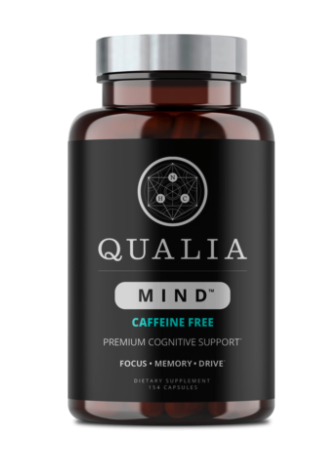 Qualia Mind is another mainstay in my brain-boosting toolkit. I’ve been using it for years, and continue to reap its benefits when it comes to focus, cognitive drive, verbal fluency, memory recall, and balancing emotions.
Qualia Mind is another mainstay in my brain-boosting toolkit. I’ve been using it for years, and continue to reap its benefits when it comes to focus, cognitive drive, verbal fluency, memory recall, and balancing emotions.
In fact, I dig this stuff so much I wrote an entire immersive article on it, entitled “Does A ‘God Pill’ Exist?” that provides all the nitty-gritty details on my experience trying it for the first time.
In a nutshell, Qualia Mind is essentially a multi-vitamin for your brain and contains a blend of nootropics, choline donors, amino acids, neuro-vitamins and minerals, adaptogens, antioxidants, and neuro-anti-inflammatory compounds. All of these ingredients work together to support the formation of new neurons, acetylcholine signaling, and brain mitochondrial function. I consider Qualia Mind to be kind of like the brain “food” or brain “fuel” that can work well to support the brain in combination with the other compounds discussed in this article, which are more like the “engine” that need the fuel.
Personally, I’m a fan of the caffeine-free version of Qualia Mind, since I already get an adequate dose of caffeine from my morning coffee.
Dosing:
One serving size of Qualia Mind is 7 capsules.
Nicotine
Don’t worry, I haven’t picked up a smoking habit, but I do occasionally enjoy the brain-boosting effects of nicotine—without the tar-filled cancer-stick, of course. Though cigarettes have rightfully been vilified when it comes to health and longevity, nicotine as an isolated compound has been shown to have a number of cognitive-enhancing benefits, such as: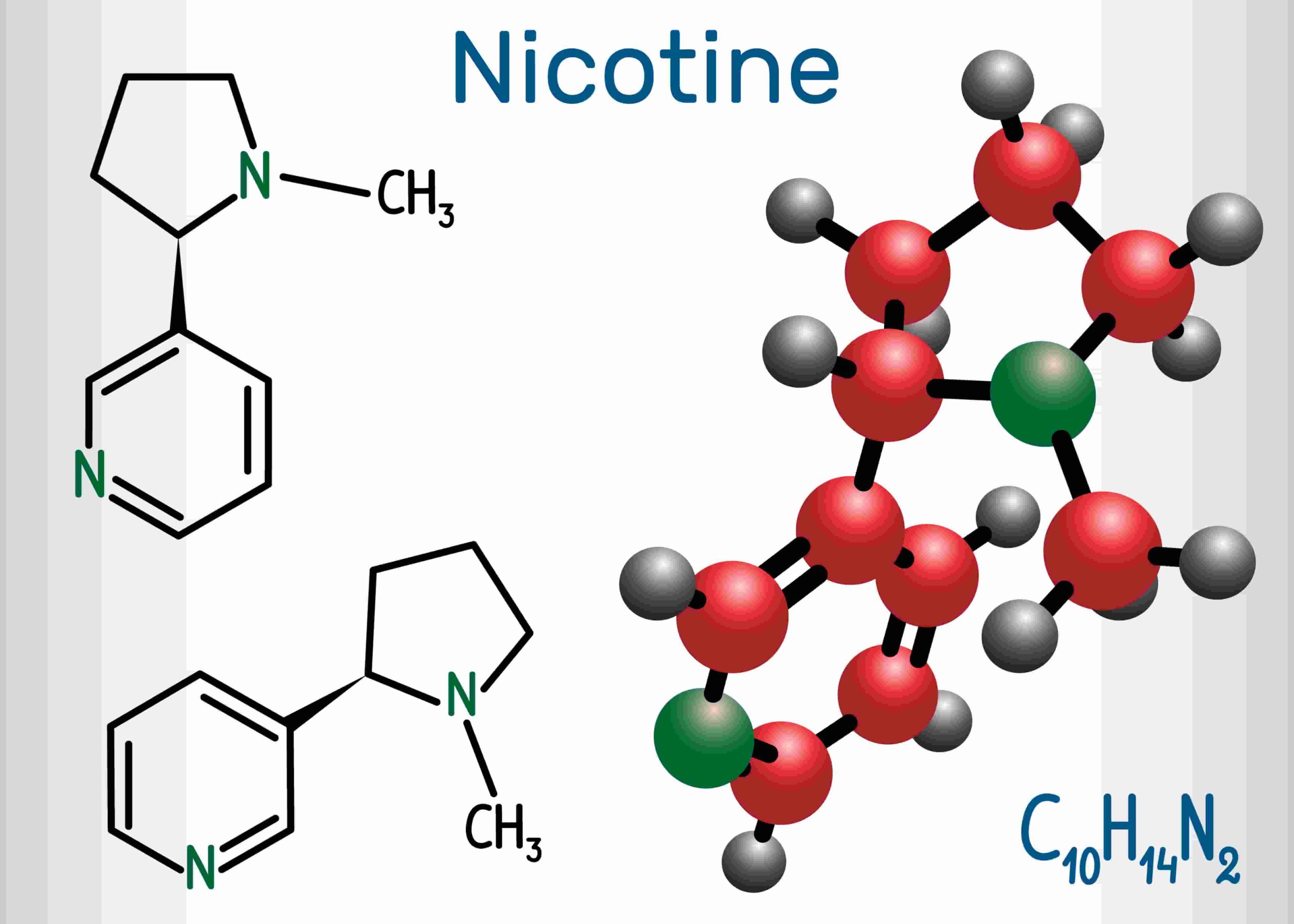
- Improving working memory and enhancing memory consolidation during learning
- Boosting attentional capacity and performance, your ability to focus and pay attention to one task at a time
- Neuroprotective effects and the ability to downregulate neuroinflammation in the brain, which may make it a potential therapeutic for neurodegenerative diseases
Additionally, when you consume nicotine, there are other lesser-known metabolites produced that also appear to have beneficial effects. One particularly interesting one is called cotinine, which has been shown in preclinical trials to improve working memory in a mouse model of Alzheimer’s disease and in a monkey model of schizophrenia.
So how do I personally consume isolated nicotine? While there are a number of delivery mechanisms—such as nicotine gum, toothpicks, or a spray—these days I'm digging the combination of nicotine with caffeine, hemp extract, and methylene blue in the form of a convenient Troscriptions (Tx) Blue Cannatine troche. I'll also chomp on 2-4 pieces of Lucy Gum many days.
Dosing:
I will typically use 2-4mg of nicotine, administered over twenty to thirty minutes.
Cautions:
Now, if you’ve ever had an uncle that crushed a pack of Marlboro’s a day, you may be concerned with becoming addicted to nicotine, and rightfully so. Interestingly, nicotine’s addictive potential and its cognition-enhancing benefits are inextricable: both processes are closely linked through the neurotransmitters they depend upon.
However, if you use it responsibly and sparingly, avoiding nicotine tolerance or addiction while still reaping cognitive benefits is very possible–just stick to the dose suggested, and don’t use it every day.
Another issue with nicotine, aside from the addictive potential, is that it serves as a systemic vasoconstrictor. This means that if you have high blood pressure, erectile dysfunction, or any condition that would be aggravated by a narrowing of the blood vessels, you either a) wouldn't want to use nicotine, or b) would want to combine it with something that would combat some of that vasodilation, like beets, niacin, nitroglycerin, or even Viagra.
If you are going to tinker with nicotine as part of your nootropic protocol, I’d highly suggest reading my article “6 Natural Home Remedies & Biohacks To Fix Nicotine Addiction (& Stop Nicotine Withdrawal Symptoms)” to proactively equip yourself with strategies to have a responsible relationship with this substance.
Methylene Blue
More commonly known as fish tank cleaner, methylene blue is another potent cognitive enhancer—albeit one that will turn your mouth Smurf blue for hours, and sometimes irreversibly stain anything that it comes into contact with.
I like to call it “blue tongue magic”…and by the way, baking soda in water swished in your mouth gets the blue off.
 While sucking on fish tank cleaner sounds a bit odd, you may think differently after taking a look at the benefits of methylene blue from recent studies:
While sucking on fish tank cleaner sounds a bit odd, you may think differently after taking a look at the benefits of methylene blue from recent studies:
- Restores mitochondrial function
- Provides neuroprotective effects against brain inflammation and traumatic brain injuries (TBIs)
- Enhances memory by increasing cytochrome oxidase activity and decreasing oxidative stress
- Improves attention span and increases memory consolidation, a process that maintains, stabilizes, and strengthens memories stored in the long-term memory
- Prevents amyloid plaque buildup in the brain, making it a potential therapeutic for Alzheimer’s, Huntington’s, Parkinson’s, and dementia
Pretty impressive, right?
As mentioned in the previous section on nicotine, these days I’m digging Troscriptions (Tx) troches (pronounced troh-keys), which are small lozenges designed to slowly dissolve between a person’s cheek and gum, gradually releasing ingredients into the bloodstream. You can either get the Just Blue troches which consist of just methylene blue, or my personal favorite, Blue Cannatine which includes methylene blue along with nicotine, caffeine, and hemp—a unique combo that results in near-instant focus, clarity, verbal fluidity, and mental performance that lasts three to four hours.
Dosing:
Effective doses range from 1-4mg per kilogram of body weight, but more is not better, since excess use can lead to high levels of free radicals, oxidation, and inflammation. In the past, I’ve personally used a very low dose—80 micrograms—one to two times per week. Methylene blue also pairs very well with anything that involves sunlight or breathwork, so try to stack it with those activities when you can.
Microdosing Psychedelics
Huachuma (San Pedro)
Huachuma, more commonly known as San Pedro, is a cactus native to the Andes mountains in South America that naturally contains mescaline—one of the longest-studied psychedelics in the world.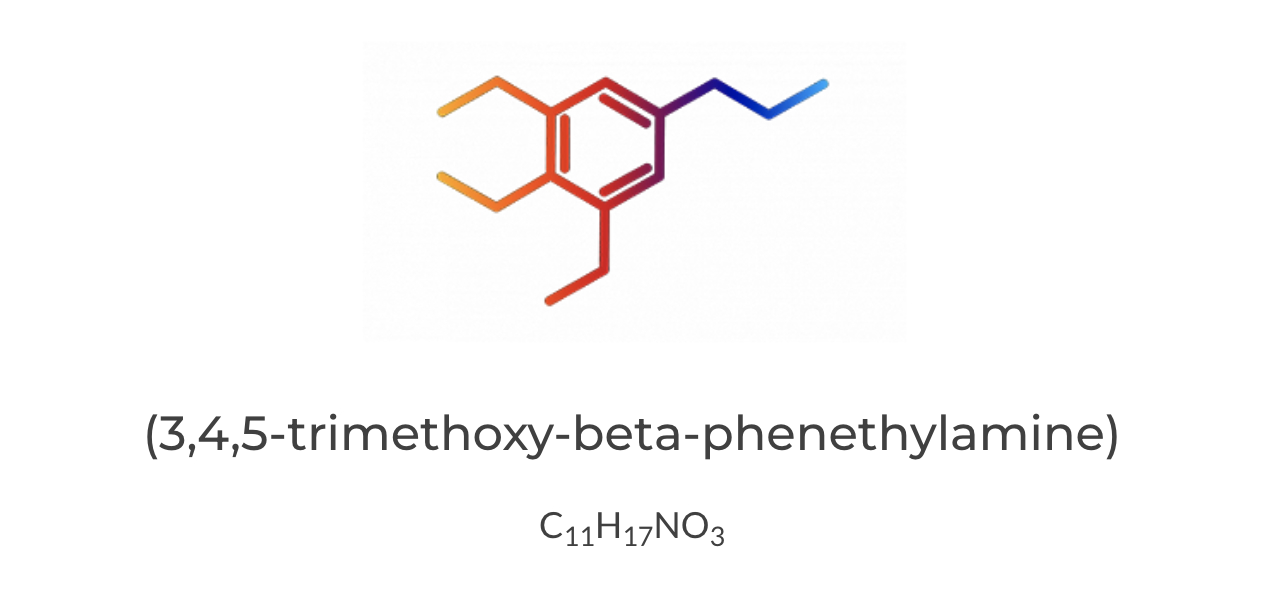
San Pedro has unique effects among psychedelics, and will typically leave you feeling relaxed, empathetic, and slightly drowsy, yet still “in control.”
I’ve been using microdoses of it lately to help me get deep into relaxation and reach a dissociative mode, often during an evening massage. I also tend to use a small 200-300mg dose prior to social activities, such as a date night with my wife, as I feel it seems to most notably increase sensations of compassion and empathy.
Dosing:
When it comes to “dosing” San Pedro, what you’ll really want to pay attention to is the mescaline content. Unfortunately, there’s no way to tell how much mescaline San Pedro contains just by looking at it, which can make finding the right dosage tricky. Just 50g of dried cactus might contain 150mg mescaline (a threshold dose) or 1150mg mescaline (a potential overdose). According to Third Wave Psychedelics, you can consume around 1000 mg of San Pedro safely, but you’ll ideally want to stay well below that. Here are some guidelines from them on how to prepare it.
Cautions:
Microdosing is usually incredibly safe. However, if you choose to take more than a microdose, be sure to adhere to the 6S’s of the psychedelic experience to avoid having a “bad trip.” You’ll also want to avoid alcohol and serotonin-based antidepressants while taking any psychedelics.
Psilocybin
Yes, these are the “magic mushrooms” you've no doubt heard plenty about. Psilocybin mushrooms are fungi that contain the psychoactive compound psilocybin, which primarily acts on the serotonin receptors in the brain, and in high doses, can produce powerful hallucinations and spiritual or mystic experiences.
 In microdoses, however, psilocybin can enhance creativity, energy, and focus, as well as reduce feelings of anxiety, stress, and depression.
In microdoses, however, psilocybin can enhance creativity, energy, and focus, as well as reduce feelings of anxiety, stress, and depression.
I’ve personally found microdosing psilocybin to be best for creatively-demanding workdays, nature immersions, hiking, journaling, or bouts of self-discovery. This stacks quite well with any blood flow enhancer (e.g. arginine, sildenafil, etc.) as well as Lion's Mane mushroom extract.
Dosing:
A microdose of psilocybin is generally between 0.1-0.5 grams, and I’d highly recommend you start on the low end of the dosage range with these or any of the psychedelics mentioned here. For more info, check out Third Wave’s guide to microdosing Psilocybin here.
Cautions:
Microdosing is usually incredibly safe. However, if you choose to take more than a microdose of any psychedelic, be sure to adhere to the 6S’s of the psychedelic experience to avoid having a “bad trip.” You’ll also want to avoid alcohol and serotonin-based antidepressants while taking any psychedelics.
LSA
Unless you’ve been living under a rock, you’ve likely heard of LSD—but how about LSA, acid’s mild-mannered cousin?
LSA (also known as ergine) is structurally similar to LSD, but it doesn’t need to be synthesized as it naturally occurs in more than 1,000 species of flowering plants, such as morning glory. LSA is also not quite as potent as LSD and tends to produce a dreamlike, euphoric, joyful state.
I typically micro-microdose with a bit of LSA (10-20mcg) when I want a boost in mood for an evening outing, or to enhance my creativity and focus prior to a hefty afternoon of writing.
Dosing:
A typical microdose of isolated LSA is between 0.1-0.5mg, sometimes obtained via chemical supplementation but also obtained by slowly chewing the seeds of morning glory (5-15 seeds) or Hawaiian baby Woodrose seeds (⅓ -2 seeds). However, I don't recommend the seed option as it may cause gastric distress.
Cautions:
LSA can cause vasoconstriction, which means it may be risky for those with pre-existing heart conditions or high blood pressure.
Ketamine
 Ketamine is actually a general anesthetic most commonly used on animals, but ironically was originally devised for and tested on humans.
Ketamine is actually a general anesthetic most commonly used on animals, but ironically was originally devised for and tested on humans.
Experts don’t exactly know how it works, but believe it might be able to repair damaged synapses in the brain that contribute to stress and depression. Recently, ketamine was approved by the FDA as a therapy for depression, and as a result, “ketamine clinics” are now opening up all over the world. Pretty cool, right?
I’ve found a dose of ketamine to be best during a massage, float tank session, or in any other environment that involves sensory deprivation and/or introspection. A microdose of intranasal ketamine compounded with oxytocin is also great for date nights and sex.
Dosing:
Finding your ideal microdose of ketamine can be tricky, so it is important to start just a bit below the recommended doses, which usually range from 0.75-0.2mg per kilogram of body weight when taken sublingually (under the tongue).
Cautions:
Avoid mixing ketamine with any drugs that depress breathing such as alcohol, opioids, and tramadol, as it is an extremely calming agent that can produce a heavy sedative effect if you’re not careful.
A Week In the Life: Ben Greenfield’s Updated Brain-Boosting Protocol In Action
In case you’re wondering how to actually put together a protocol with such a wide variety of nootropics, psychedelics, and other compounds, here’s a detailed look at what an entire week looks like for me in terms of what I'm using and when.
Daily:
Most mornings of the week, I drink either MiCacao tea or Kion Coffee. I will also often throw in a couple of packets of the Four Sigmatic Lion’s Mane or Cordyceps Elixir for a little extra cognitive boost before a busy workday.
About mid-morning, as I’m about to launch into work after breakfast, I’ll have a shot of Feel Free to give my brain a little feel-good boost.
Most evenings except for one to two days a week, I’ll have one glass of organic, biodynamic wine with dinner after a hard workout—which I find to be the perfect relaxant and “social lubricant” at the end of a long day. While alcohol can certainly have its downsides, as I laid out in a recent article, even the Bible speaks favorably of using wine for medicinal purposes and advises to “drink your wine with a cheerful heart,” so long as temperance is practiced. There are also a number of health benefits of moderate drinking, including an increase in glymphatic function (your brain’s ability to clear waste products), decreased inflammation, and relief of mental stress.
I should also mention that, almost daily, I utilize at least one “substance-free nootropic” for mood, focus, and creativity, such as breathwork (often using the Othership app), meditation, fasting, and nature immersion–as well as “tech-based nootropics” like the Hapbee for focus during a workday, and the Apollo or Sensate for relaxation in the evening. For me, this is usually Sunday, since I keep the Sabbath and don't do much work or very cognitively demanding activities on that day.
Every other day or so:
If I have a cognitively-demanding day ahead of me (which is usually 3-5 days a week), I’ll take 4-7 capsules of Qualia Mind Caffeine-Free with my morning cup of coffee or tea.
In the afternoon, I’ll often take my phone calls while on a walk outside in the sunshine and pop a Troscription methylene blue troche under my tongue to amp up mitochondrial and cognitive function.
Prior to meditation, breathwork, or a massage session, I will also sometimes do two sprays of ZEN Nasal Spray into each nostril, a concoction made from different Amazonian medicinal plants for the purposes of calming and quieting the mind to reduce anxiety and stress.
Once per week:
On my most creatively-demanding day of the week, I’ll typically take a microdose of psilocybin, combined with Lion’s Mane and niacin.
Also, about once per week, I’ll microdose with LSA when prior to an evening outing, a date with my wife, or a hefty afternoon of writing.
Additionally, about twice a month before my evening massage, I’ll take a microdose of San Pedro to tap into a more dissociative state–sometimes also paired with a dose of ketamine if I want to deeply relax, allow my massage therapist to dig in a bit deeper (ketamine kills pain pretty well, too) tap into past memories, or release trauma as my practitioner works on fascia (which can tend to store pent-up emotions and trauma).
Sundays:
This is a day I devote to spiritual disciplines and time with family, so, other than a cup of coffee, I will often go “substance-free” on Sundays in order to push the reboot button on my brain and body.
Summary
While there’s no substitute for quality sleep, nourishing food, and mitigation of environmental toxins and pollutants, experimenting with certain compounds can be a truly mind-altering and brain-bettering experience. I can personally say, thanks to the responsible use of nootropics, psychedelics, and plant compounds, I’m a more productive, creative, focused, energetic, introspective, and loving person than I was a few years ago. That’s pretty darn cool.
However, I must not gloss over the fact that I’ve also done the “deep work”; regular meditation, breathwork, extended fasting, prayer, solo nature immersion, journaling, sound healing, and more have simply helped these substances work more effectively. So for best results, before turning to any substance to “fix your brain,” consider first utilizing some of these tactics, or at least practice them in combination with your own plant medicine protocol.
In the very likely case that your head is spinning (and not from those ‘shrooms), let's recap my updated list of go-to compounds for cognitive enhancement:
- Coffee or MiCacao Tea: I alternate between one or the other in the mornings, usually along with a couple of packets of Four Sigmatic Lion’s Mane or Cordyceps Elixir.
- Qualia Mind Caffeine-Free: Every other day or so on cognitively-heavy days, 4-7 capsules along with my morning cup of coffee or tea.
- Feel Free Wellness Tonic: Taken mid-morning prior to jumping into the day's work.
- Nicotine +Methylene Blue + Hemp Extract + Caffeine: In the form of a Troscriptions Troche, used in the afternoons while on a walk outside taking phone calls.
- Organic, Biodynamic Wine: One glass with dinner, taking 1-2 days off per week.
- Huachuma (San Pedro) and/or Ketamine Microdose: Once or twice per month during my evening massage.
- Psilocybin Microdose: Once per week on creatively-demanding workdays or during nature immersions, hiking, journaling, or self-discovery. Often combined with Lion’s Mane and niacin.
- LSA Microdose: Once per week when I want a boost in mood for an evening outing, date with my wife, or to enhance my creativity and focus for a day of hefty writing.
How about you? Have you used any of these substances, and what was your experience? Any new ones I need to try? Leave your questions, comments, and feedback below. I read them all.

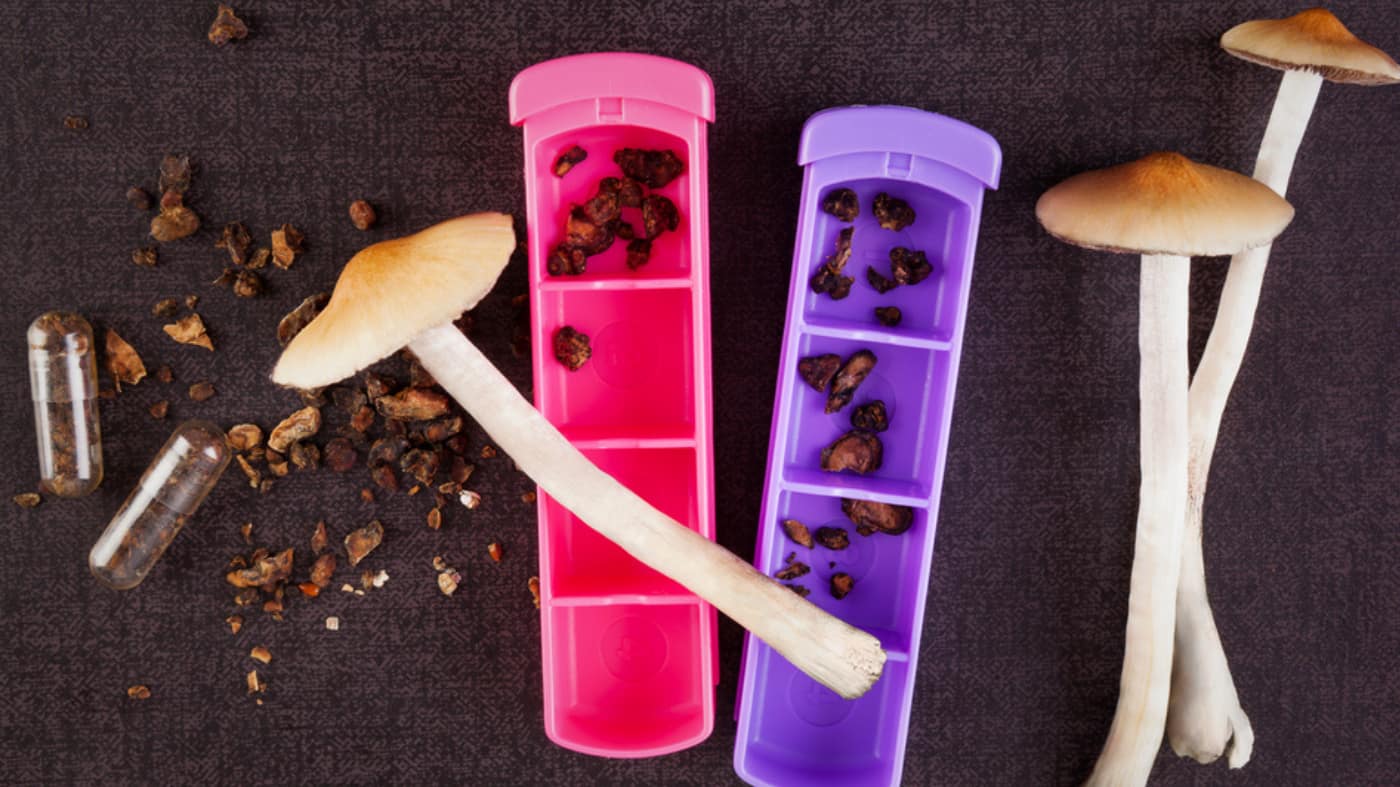
which is better in your opinion for microdosing for depression and apathy and which protocol do you think would be most beneficial.
Thanks Bob (U.K)
Hey Bob, feel free to check out this resource on how to support your brain: bengreenfieldlife.com/unbeatable16
Thank you for this summary, Ben
Microdosing LSD has allowed me to give myself a DISTINCT competitive edge when it comes to bodybuilding. By dissolving my boundaries and focusing on the task at hand – intense training – consistent dietary adherence – and ample self care time … I truly can say I would not be the same athlete – nor would I be as grateful for my life without this substance
Ben- please edit article to differentiate the difference between pharmaceutical grade methylene blue and actual fish tank cleaner— as written people may believe its safe to injest the fish tank cleaner…Otherwise fantastic article,
Great content Ben. Thanks. I enjoy the boost from 2mg nicotine gum frequently. I wonder about;
*the addictive warning aspect. IE is there any health detriment? I’m probably addicted to caffeine but the health benefits are substantial and as long as I don’t run out why should I care.
*one potential health detriment I’d love for you to weigh in on might be the vasoconstriction within the mouth. IE is frequent use bad for ones oral health… gums teeth etc
Thanks, Joe
I find this interesting. Thanks for sharing.
Glad to hear it Dan!
This is so incredible!!! Nootropics are not discussed enough in their relationship with nutrition and physical movement. Glad to see this information finally out there!!! 🔥💪👊
Hahah I love your work Ben! Would love to jam (play some music) with you on your incredibly high quality “supplements”, soak up some of your knowledge and share stories of consciousness expanding experiences.
Appreciate your energy bro!
Thank you.
I appreciate the message (and sentiment) Jordan!
Hey Ben, is there a level of dependency that comes with all this? Like how does the brain respond and work if you go a few days not taking anything? Cheers
It’s always smart to take a few days off of all nootropics (ie weekends) to let neurotransmitters normalize. Or take a quarterly-ish tolerance reset break.
Where can you get San Pedro?
It’s legal to grow San Pedro in most countries, including the US and UK, but often not for human consumption (see Legality). It’s also very easy to grow from cuttings and can thrive in a variety of conditions—both indoors and out—although it prefers a lot more water than most cacti.[66] You can even graft fresh cuttings together (including cuttings from other species) by securing them for a few days with string.[9] Just be aware—if you’re growing San Pedro for mescaline, the common horticultural form of T. pachanoi (aka “pachanot”) has little to none of the compound.[24] Go here for more info: https://thethirdwave.co/psychedelics/san-pedro/
Personally, I have drawn my line a little closer to the conservative side as my faith is a more powerful tool to me than leaning on certain addictive and/or mind-altering substances, natural or otherwise. The objectives being that my dependence rest to a greater degree on my Creator than on a substance and that I do not fail to manifest self-control, itself a fruit of God’s Holy Spirit (Gal 5:22, 23), and thus potentially leaving myself open to the influence of wicked spirit forces. Subsequently, I have no issue with alcohol in moderation, edible non-psychedelic mushrooms, and compounds like Qualia Mind, but I steer away from psychedelic mushrooms, LSD, nicotine, Kratom, kava, betel nut, and other similar mind-altering and/or addictive compounds.
Not sure if psychedelics will help with religious indoctrination, but if you ever find time away from your important mission of converting the masses to the only true version of Christianity in existence (yours, of course) you might want to give them a try if only to see what all the heathens, heretics and blasphemers find in them that could possibly be more interesting than spending Sunday mornings in church listening to a preacher with a 6th grade education teachin y’all about the evils of evolution and such. Of the substances you named, Satan mostly prefers nicotine in the form of cigarretes and cigars, but sometimes likes himself some betel nut because of the bright red color…………….makes him feel more in charcter when he is travelling, lookin fer wayward Christians that he will drag down to hell for the sin of eatin the wrong kind of mushrooms.
Thank you Ben! Great protocol and stacks.
I think its so complex if you could also consider all the other substances that you use for longevity, recovery, muscle building or sleep, and then you get a system of effects on your brain and body, considering all the interactions. And that without mentioning food and other environmental exposures such as light or heat, since nootropics are all part of the body-environment interaction, as an effect from the environment on the body, and from the body to the environment, for example in your writing, and all mediated by behavior.
I wonder about how you avoid the trap of psychological dependency and how you feel when you are not using any of these. Certainly for example the experience with psylocibyn is so extraordinary that you would want to feel like that everyday if it wasn’t due to rational control and knowledge of the possible adverse effects of daily use, and also due to the fact that precisely everyday use robs it of that special quality since it becomes ordinary again. Thats what I feel sometimes these substances dont make much an effect as they used to on me, since they already did the work on my experience, and took me to a new level which is then normal for me now.
Thanks for sharing, we follow your ideas form Chile in South America. Great work with your podcast.
Cristián E.
Are you sponsored by psilocybin, ketamine and LSD as well?!?! Not sure what’s going on here! Ben, when I first started listening to you, buying your books, I thought you were really out to help everyone’s health! I know you are, but every single article, like this one, is written, seemingly, for the benefit of your bottom line. I agree with your info on things I’ve tried (microdosing psilocybin and LSD), but then your sponsorships get in the way. I’m talkI got to my other buds and they’re not sure what to take from this. I love you man, but I don’t like being oversold…and you’ve been overselling for awhile! I do appreciate the Christian, spiritual aspect you bring; but that has a price of books and journals to purchase as well! Guess I’ve been bummed out lately and having a hard time listening to you much any more! I think you’re a top-notch human, but have been sliding away for 4-5 months now! Could be all the celery juice I’ve been drinking! Peace, love and dope!
To answer your question directly, no, I am not sponsored by psilocybin, ketamine and LSD. I'm sorry if me sharing my personal protocol that I've found to be effective and beneficial was somehow offensive.
I know it’s your business, but I’ve been feeling a bit anxious about doing or trying “everything.” I didn’t mean to hurt your feelings, seriously! I think your a great human; the “commercials” have just been hitting me different lately! Just a bit of stress in my life, and yours too, I’m sure. Bless you bro!
Hey Elliott, no hard feelings, God bless!
Ben, how would adding Methlyene blue with microdose of shrooms work out?
He shares the things he finds useful, which are often products. Most of his audience already knows about (and does) the basics.